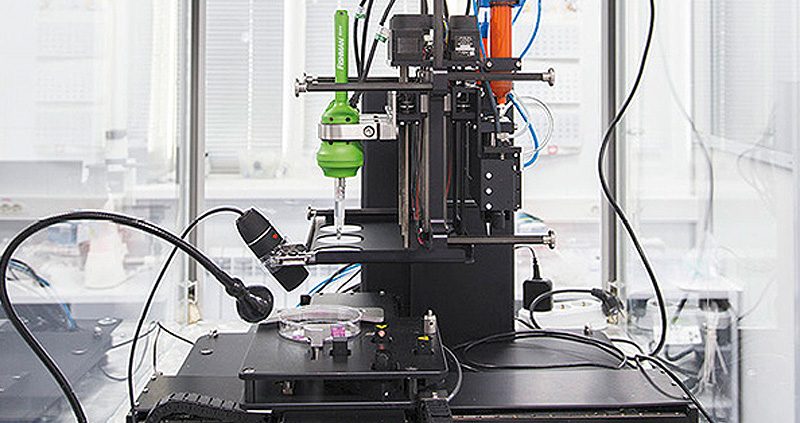The Future of Medicine
It’s safe to say that 3D printing has already taken the world by storm. Whether it’s by the aerodynamic parts it can print for formula one cars, or having the ability to print an exact model of yourself in miniature 3D form in a couple of hours. The technology’s potential really is boundless.
Perhaps the most valuable aspect of 3D scanning and printing is how it can significantly enhance the medical field, and already has.
A technique called bioprinting is based on bio-ink, which is made of living cell structures. This process involves creating cell patterns that can be printed and built up, layer by layer. Bioprinting is used to create organs, tissues and medications.
Even though bioprinting has been successful in printing organs, it is yet to be successfully printed for actual surgical use. Kidney cells and sheets of cardiac tissue that mimic a heart beat have been created and it is thought that an entire human organ transplant is only 10 years away from completion.
3D printing has also been involved in stem cell regeneration as researchers have now worked out how to bioprint stem-cells to create tissue and in the future print stem cells directly onto the human body.
With the advancements in the printing of stem cells, researchers have been developing ways in which skin cells can be bioprinted directly onto the body in place of skin grafts for those who have suffered severe burns and skin cancer.
Skin cancer isn’t the only type of cancer that 3D printing may aid in research and development as disease cells and cancer cells are also being bioprinted, in order to more effectively and systematically study how tumours grow and develop. This means that if patterns and cell structures can be identified better, medical engineering would allow for better drug testing, cancer cell analysing and therapy development.
It isn’t just skin and stem cells that can be bioprinted as researchers have created blood vessels using artificial biological cells and printed them using a 3D inkjet printer and a laser to mould the vessels into shape. This type of development could be used in the future to repair those with heart defects and cardio vascular issues.
It’s important to note, it’s not only organs and cells that can be re-created with 3D printing and could save the medical sector money in the future. Sterile surgical tools can easily be printed and developed at a fraction of the cost of stainless steel tools including haemostats, forceps, scalpels and clamps.
Whether it’s for medical instruments or organ replication, it’s clear that there is an important future for 3D printing and it’s exciting to see what the next ten years will bring for those in this innovative industry.


